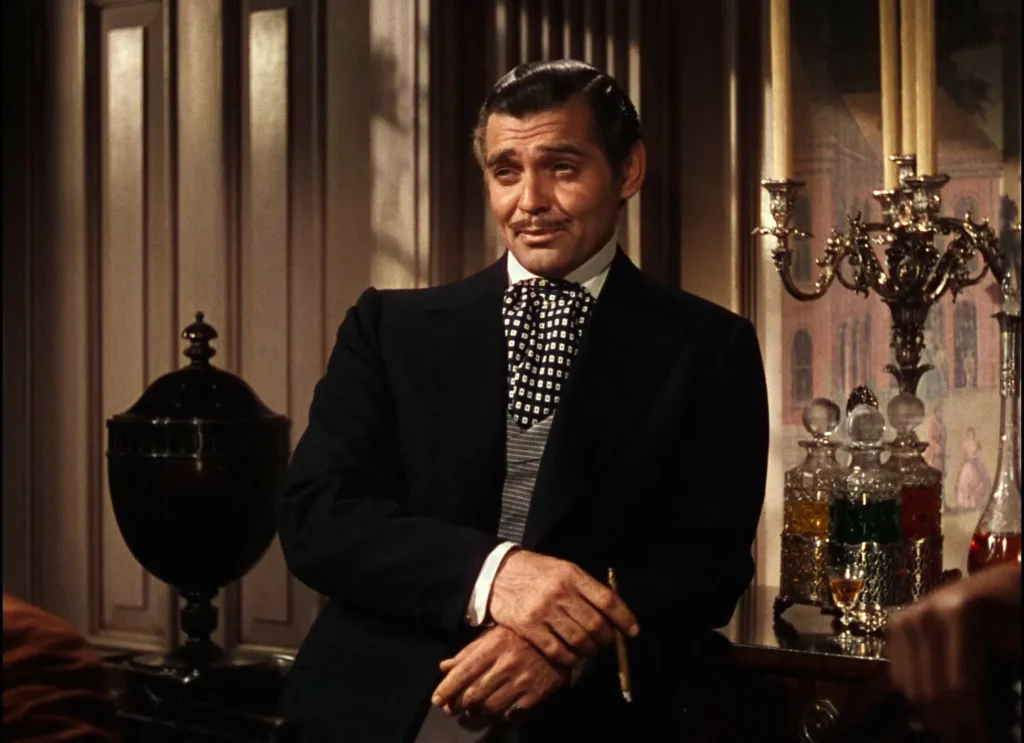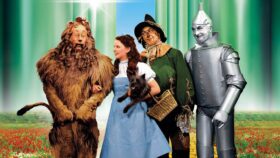The term “Technicolor” has a long and storied history in the motion picture industry. It’s an iconic image associated with classic films, but what exactly does it mean? This article dives into the definition of a Technicolor movie, exploring its origin and its place in modern film production. First developed nearly a century ago by two American inventors, Technicolor was the first successful color motion picture process.
Definition of Technicolor.
Technicolor is an advanced motion picture color process that was used in the film industry for nearly a century. The process, developed by the Technicolor Motion Picture Corporation, allowed filmmakers to create vibrant and lifelike colors on film. The term “technicolor” has come to mean bright and bold colors in general, but it originally referred specifically to this cinematic technology.
The Technicolor process involved photographing each frame of the movie three times through red, blue, and green filters. These images were then printed onto one strip of 35mm color film using dye imbibition printing technology. This combined the three colored images into one full-color image that could be viewed on a projection screen without fading or washout over time.
History of Technicolor.
The history of Technicolor is a fascinating one, tracing its roots all the way back to 1916 when it was founded in Boston. It began as a dye-making company that quickly gained popularity for its advanced color films which were then used in a variety of films and documentaries. In 1922, Technicolor released the first commercially successful feature film ever made, The Toll of the Sea. This marked the beginning of an era where films were seen in vibrant hues, often leading to heightened emotion and feeling from viewers.
Over the decades, Technicolor has continued to develop advanced color technology for film production, pioneering advancements such as three-strip technicolor and digital intermediate techniques used by filmmakers today.
Also read – Magnum P.I. – What Is It Based On?
Components of a Technicolor Movie.
Technicolor is a color motion picture process that was developed in the early twentieth century. The process uses three color components, or “color separations” to generate full-color images. This process has been used in films such as “The Wizard of Oz,” “Gone with the Wind,” and most recently, “Avatar.”
A Technicolor movie consists of several components. First, a set of primary colors is chosen from the spectrum – usually red, green and blue. These colors are then photographed separately onto black and white film stock by using three cameras equipped with different colored filters for each camera. The result is then printed onto different colored strips of film which create what is known as a composite print.
Also read – Magnum P.I. – What Is It Based On?
Color Palettes & Cinematography.
When it comes to cinematography, color palettes are an important element to consider. Technicolor is one of the most popular and recognizable color palettes used in film. It is a vibrant and saturated palette that emphasizes bright, vivid hues such as reds, blues and greens primarily. This type of color palette is often associated with traditional musicals from the 1950’s and 1960’s, making it a nostalgic favorite for many viewers.
The use of technicolor has been utilized more recently in some modern films to add vibrancy and evoke certain emotions from the audience. For example in Edward Scissorhands (1990), director Tim Burton uses bright vibrant colors like pink, orange and yellow which creates a whimsical atmosphere for viewers rather than relying on dark surrealism visuals he was known for using at the time.
Also read – Why ONGBAK 1 Is Better Than 2&3.
What are the characteristics of Technicolor?
Technicolor, a groundbreaking film process from the early 20th century, was known for its vibrant colors and dramatic impact on cinema. The three-strip Technicolor process revolutionized filmmaking by creating vivid hues and greater detail in scenes.
The Technicolor process worked by using a special camera that exposed black-and-white film through three different color filters. The rolls of film were then sent to a laboratory where they were dyed with red, green and blue dye, creating a full spectrum of colors. This created an incredibly rich look with deep blues, bright greens and vivid pinks. In addition to the wide range of colors available with this method, Technicolor also brought sharper contrast than could be achieved with any other type of color photography at the time.
Examples of Technicolor Movies.
Technicolor was a process that revolutionized filmmaking in the early 20th century. It allowed filmmakers to create vibrant and colorful images that had never been seen before on the big screen. Examples of some of the most iconic technicolor movies include “The Wizard Of Oz”, “Gone With The Wind”, and “Singin’ In The Rain”.

The Wizard Of Oz is perhaps one of the best examples of technicolor cinema. Its vivid greens, purples and blues painted an enchanting world for viewers to escape into. The film also featured innovative special effects such as flying monkeys and a stormy tornado scene created with wind machines and smoke machines which brought it to life in a way that no other movie had done before.
Benefits of Technicolor Movies.
The introduction of Technicolor movies in the early 1900s revolutionized how audiences were able to experience films. The vibrant colors and hues created by this revolutionary filmmaking technique has led to more entertaining and enjoyable viewing experiences for moviegoers. As such, technicolor movies have since become a staple of the cinematic arts, providing viewers with a more vivid and bold array of visuals than ever before.
Technicolor’s impact on the film industry is far-reaching, as its beautiful imagery helps to make stories come alive onscreen. This method of filmmaking promotes an immersive sense of atmosphere that sets it apart from traditional black-and-white cinema. Not only does technicolor provide viewers with clear images that jump off the screen, but also allows filmmakers to express their creativity through visually stimulating color palettes and special effects.
Examples of Technicolor Movies.
The technicolor process has been a popular way to create vivid and vibrant colors in films since its invention over 100 years ago. Technicolor is still used today and some of the most recognizable movies have utilized this method of colorizing film. Some exemplary technicolor films include The Wizard of Oz (1939) with its yellow brick road, Gone With the Wind (1939), Mary Poppins (1964) and more recently, Avatar (2009).
The technicolor process was invented by Herbert Kalmus in 1916 as a three-color additive process which combined red, green and blue light through filters to produce full spectrum color images on film. The first feature length movie shot with this system was The Toll Of The Sea in 1922.
Challenges in Producing Technicolor Films.
In the early days of cinema, films were often shot entirely in black and white. But with the advent of Technicolor, filmmakers were given a new way to create stunning visuals for their films. Although this new technology revolutionized the industry, it also presented a number of challenges.
The most notable issue with Technicolor was the film stock itself. This color film was more expensive and difficult to handle than traditional black and white film stocks, which made it less accessible for many filmmakers. Additionally, because this type of film required three separate strips of negatives to be exposed at once – each one recording different colors – there was an increased risk for errors when exposing the negative or developing it during post-production.
What was the first Technicolor movie?
The first Technicolor movie was released in 1922 and titled “The Toll of the Sea”. It starred Anna May Wong, a Chinese-American actress, who played the leading role of an Asian woman. The film was a silent movie about a young Chinese woman who falls in love with an American sailor.
Produced by Technicolor Motion Picture Corporation, it was one of the first color films to be produced using their revolutionary technology. The company had been founded by Herbert Kalmus, Daniel Comstock and W. Burton Wescott earlier that year to produce feature films using their newly developed three-color process. “The Toll of the Sea” featured greens and blues as well as shades never before seen on screen due to this process, which set it apart from other films at the time.
Why is Technicolor no longer used?
Once a staple of the movie industry, Technicolor is no longer used when making films today. For many years, filmmakers relied on Technicolor to bring out the vibrant colors in their movies and make them stand out from other films. But why has this technology been abandoned?
Experts attribute the decline of Technicolor to two major factors: technological advancements and budgetary concerns. Digital color grading has become increasingly popular in recent decades due to its affordability compared to traditional film processes like Technicolor.
A shift towards digital filmmaking also allowed directors greater control over how they portray their stories visually, further diminishing the need for Technicolor’s services. Additionally, filmmakers are now able to adjust color grades during post-production with relative ease thanks to advances in editing software, eliminating much of the need for pre-production color grading via film processes such as Technicolor.
Is Technicolor the real color?
In the early 20th century, Technicolor revolutionized the film industry with its vibrant colors and production techniques. The company is credited with introducing color to popular films and giving them a realistic look that was previously only available in black and white. Since then, Technicolor has been an integral part of the cinematic experience, with its distinctive hues becoming synonymous with Hollywood blockbusters. But is there really such a thing as “real” Technicolor?
Technicolor movies use three strips of film to capture all the colors of each scene. This gives them their trademark vibrancy that can’t be replicated by digital filmmaking techniques. While some filmmakers strive to recreate this look using modern technology, many argue that it simply isn’t the same thing as true Technicolor.
Conclusion.
In conclusion,Technicolor is a symbol of innovation in cinema and film production, representing the ability to take storytelling to new levels. Despite its famed reputation, it has yet to be determined whether or not Technicolor is indeed the real color. It may differ from person-to-person, but one thing is certain – Technicolor has endured the test of time and continues to be a powerful tool for filmmakers today. The possibilities are truly endless when it comes to creating special effects with this technology.

I am a highly experienced film and media person who has a great deal to offer to like-minded individuals. Currently working on several exciting projects, I am a film and media practitioner for over a decade. I have achieved a great deal of success in my professional career.


Comments are closed